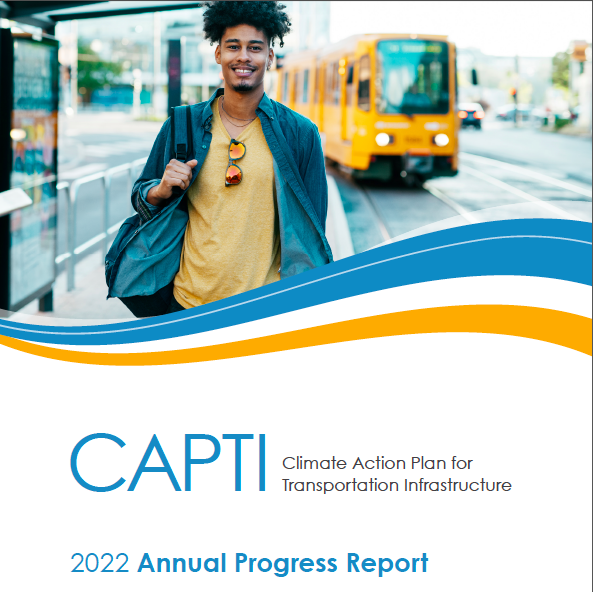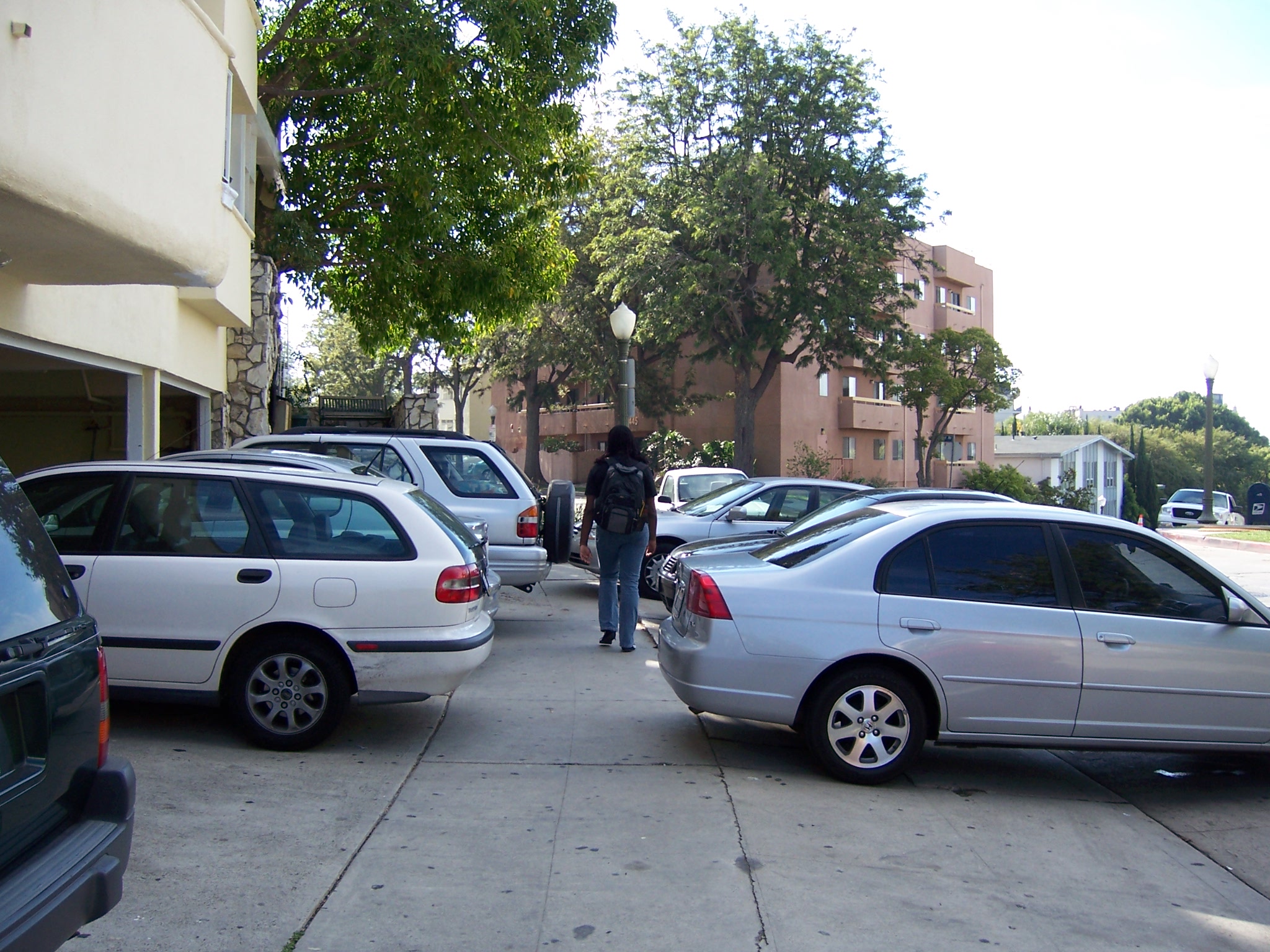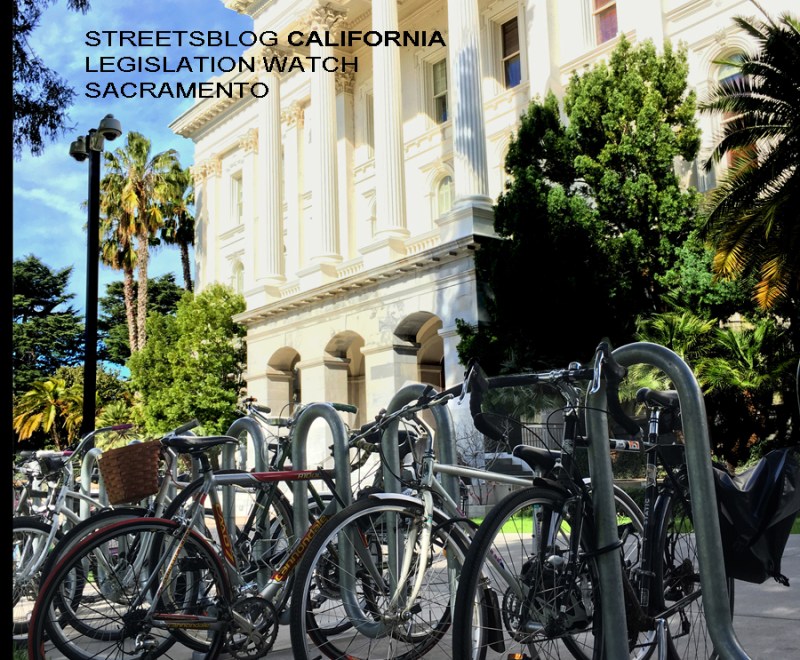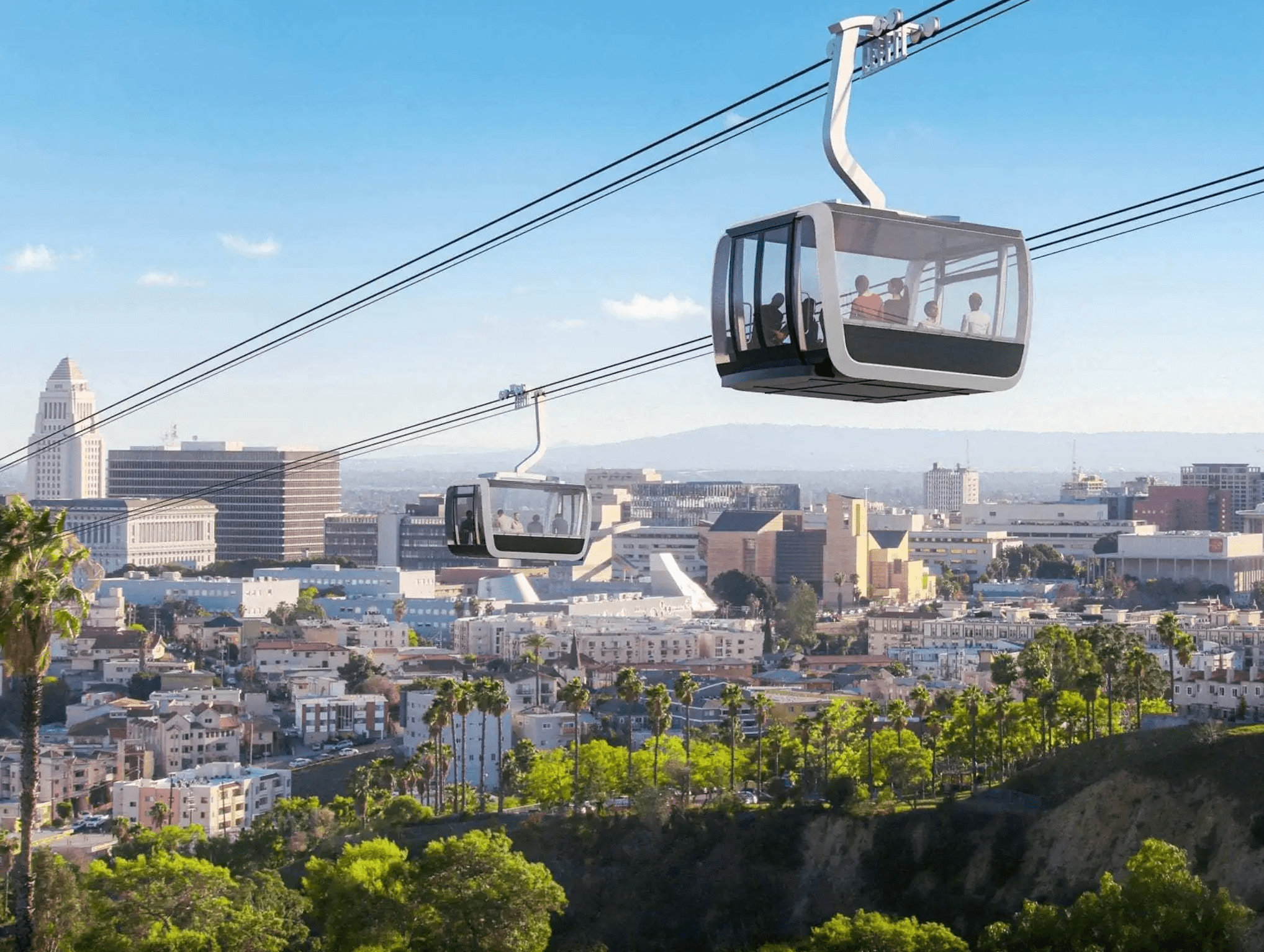Note: GJEL Accident Attorneys regularly sponsors coverage on Streetsblog San Francisco and Streetsblog California. Unless noted in the story, GJEL Accident Attorneys is not consulted for the content or editorial direction of the sponsored content.
The California State Transportation Agency (CalSTA) issued its first annual report on progress made towards fulfilling the goals of the Climate Action Plan for Transportation Infrastructure (CAPTI). That plan, released last year, was official acknowledgement that California has to change the way it spends its money in order to reduce greenhouse gas emissions from the transportation sector.
The report points to progress on 34 distinct "actions" state agencies will need to take within the next three to seven years. Over the first year and a half of the plan's existence, more than eighty percent of those actions are complete or have had significant progress made towards completing them. Those actions include shifting policies and rewriting guidelines for state funding programs to ensure that climate friendly projects are top priorities.
That's a pretty good score. The successes include updating guidelines for the Solutions for Congested Corridors Program and the Trade Corridor Enhancement Program to prioritize multi-modal projects or projects that encourage a mode shift, support zero-emission vehicle infrastructure projects, pro-housing considerations, and enhanced community engagement processes.
This is definitely progress. Sustainability advocates went largely unheard in the early stakeholder meetings held to formulate the guidelines for these programs, which were new under S.B. 1. CAPTI seems to have forced a shift in their focus towards what those advocates argued all along was necessary.
The report [PDF] outlines other successes, such as the one-time bump of $1 billion in state funds, plus an extra $100 million per year in federal funding, for the Active Transportation Program. The state has also made progress in funding zero emission transit and infrastructure, supporting the California Integrated Travel Project (Cal-ITP) to improve transit riders' experience and ability to connect across agencies, and developing funding plans to complete the State Rail Plan, for a few examples.
Also called for by CAPTI is the formation of an Equity Advisory Committee for state transportation agencies, and a list of participants will be submitted to the CTC at its meeting next week.
There is also progress on a deeper look at how state transportation investments are being made and how they might differ under the influence of CAPTI. To that end, a study is getting underway at the Mineta Institute to track outcomes of these changes in terms of emissions, economic prosperity, and social equity. There should be some results from that study to discuss in the next year or so.
The progress shows that - with the right combination of leadership, advocacy, and support - government can achieve goals many think are impossible. And the process is still at an early stage. While refocusing guidelines for funding is important, the actual impact will be on the infrastructure investments that will come as a result of this work, which will take longer.
CAPTI was created in response to an executive order from Governor Gavin Newsom, EO N-19-19, which called on the state agency to look at how to use discretionary transportation funding in specific programs to support climate work. Those programs are the Active Transportation Program (ATP), Interregional Transportation Improvement Program (ITIP), Local Partnership Program (LPP), Solutions for Congested Corridors (SCCP), State Highway Operations & Protection Program (SHOPP), Trade Corridor Enhancement Program (TCEP), and Transit and Intercity Rail Capital Program (TIRCP).
As CalSTA staff pointed out, many of the programs subject to CAPTI already have some alignment with state climate goals.
It would be glib to say something about this being a case of low-hanging fruit, and dismissive of the considerable work that has gone into pushing the climate conversation forward. But it would also be wrong to pretend that more doesn't need to be done. The A.B. 285 report pointed out that focusing on this small percentage of total state transportation funding is missing the picture; there is still far too much money headed out the door for many many highway expansion projects that will keep the status quo of driving being the easiest mode for most Californians.
And Governor Newsom's veto of A.B. 2438, which would have codified CAPTI, points to a strange hesitation on the part of state leadership. Why wouldn't Newsom want his own Executive Order written into statute? In his veto message he claimed that it would somehow hamstring future iterations of CAPTI.
Sustained, committed leadership will be needed for CAPTI to make enough of a difference across the board.
CalSTA is accepting public comment on this draft report until November 4 (write to: CAPTI@calsta.ca.gov) and plans to release a final draft in December. In addition, staff will present the draft at the upcoming CTC meeting, and again at the joint Air Resources Board/CTC/Housing and Urban Development meeting on November 3.





